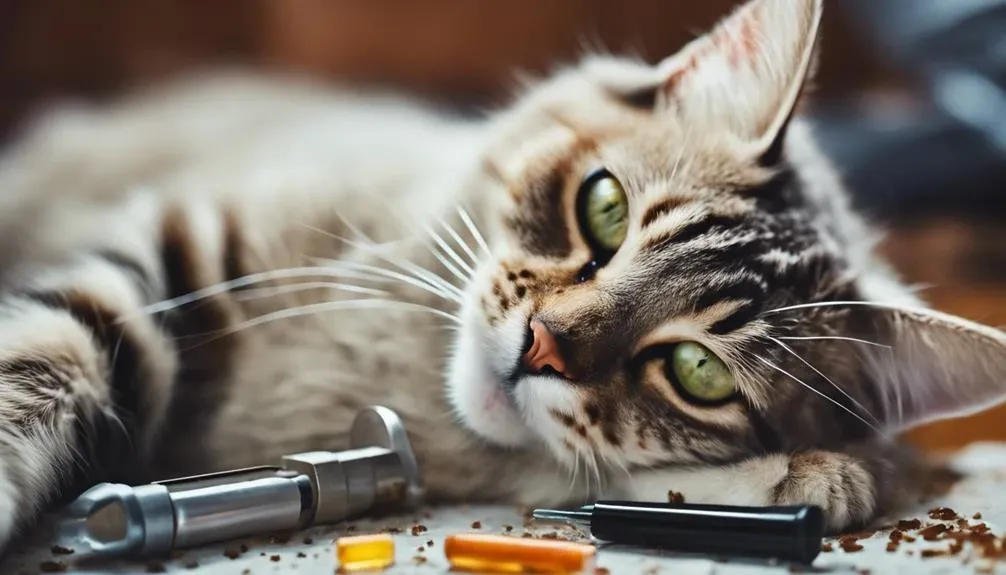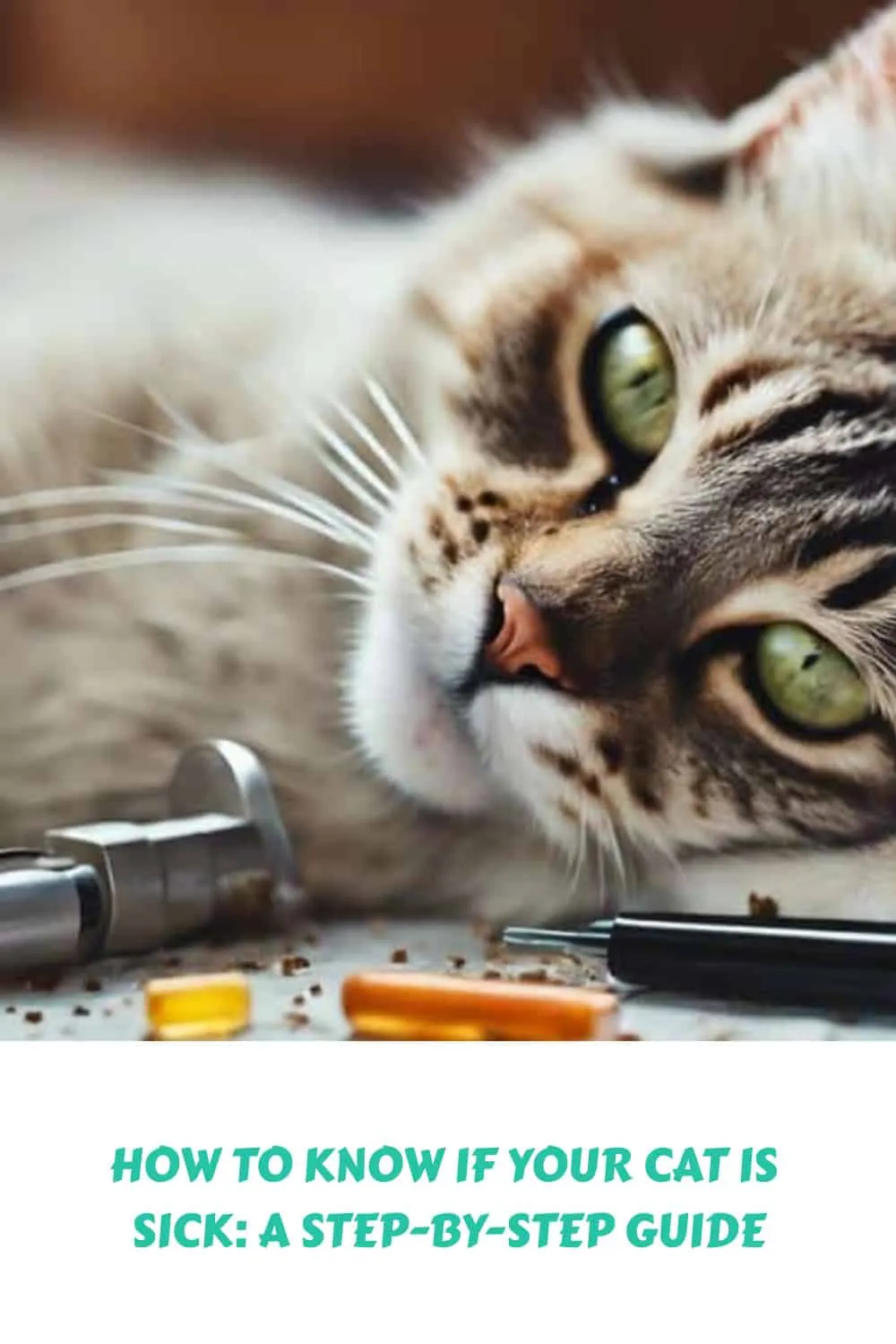The Best Fluffy Pancakes recipe you will fall in love with. Full of tips and tricks to help you make the best pancakes.

When it comes to your feline friend, the saying 'a stitch in time saves nine' couldn't be more relevant. Your cat's health is paramount, and being attuned to subtle changes can make all the difference.
But what if those signs of illness are not so obvious? Understanding the nuances of your cat's behavior and habits might just be the key to uncovering potential health issues before they escalate.
So, how can you decipher the clues that your cat may be silently suffering?
Key Takeaways
- Monitor changes in behavior, grooming, and vocalization for signs of illness.
- Look for physical symptoms like vomiting, weight changes, and altered urination patterns.
- Consider specific illnesses like hyperthyroidism, diabetes, and FLUTD in your cat's health evaluation.
- Seek veterinary help promptly for refusal to eat, unexplained weight loss, or concerning behavior changes.
Behavioral Changes to Watch For
If you notice any behavioral changes in your cat, such as increased vocalization or alterations in grooming habits, it could indicate underlying health issues that require attention. Increased vocalization in cats can be a sign of various problems like hunger, pain, cognitive dysfunction, or senility. Changes in grooming behavior, such as excessive grooming or lack thereof, may signal pain, obesity affecting grooming of hind legs, or mouth discomfort affecting grooming comfort.
Lethargy or a lack of energy in your cat may suggest underlying health problems. Skin irritation or hair loss could be behavioral signs of illness or discomfort. Additionally, bad breath in cats can be a red flag for dental disease, kidney issues, diabetes, or other internal illnesses. Monitoring these behavioral changes closely can help you identify potential health issues early on, allowing for prompt veterinary intervention and care for your feline companion.
Physical Symptoms to Look For
Behavioral changes in your cat can often manifest as physical symptoms that are crucial to recognize and address promptly to ensure your feline companion's well-being. When observing your cat, be vigilant for signs such as vomiting, diarrhea, weight loss or gain, changes in urination patterns, discharge from the eyes, bad breath, skin irritation, and eating less than usual. These physical symptoms can indicate underlying health issues that require attention. Below is a table summarizing the key physical symptoms to look for in your cat:
| Physical Symptoms | Description |
|---|---|
| Weight Loss | Sudden loss of weight despite normal eating habits can be a red flag for health problems. |
| Changes in Behavior | Unusual behavior like lethargy or aggression may signal an underlying medical condition. |
| Discharge from Eyes | Watery or pus-like discharge from the eyes could indicate an infection or other issue. |
| Eating Less | Decreased appetite or reluctance to eat may signify dental problems or other illnesses. |
| Urinary Tract Problems | Changes in urination habits, such as frequency or color, may point to urinary issues. |
Specific Illnesses to Consider
When considering your cat's health, it's essential to be aware of specific illnesses that could impact their well-being. Hyperthyroidism is a common condition in middle-aged to older cats, characterized by symptoms such as increased appetite, weight loss, nervousness, vomiting, and weakness.
Feline diabetes is another concern, presenting symptoms like vomiting, dehydration, weakness, increased thirst, weight loss, and breathing abnormalities.
Feline Lower Urinary Tract Disease (FLUTD) may manifest as inappropriate urination, appetite loss, listlessness, blood in urine, and frequent licking of genitals. Factors contributing to FLUTD include decreased water intake, infections, dietary issues, and the development of bladder stones.
Early detection of these illnesses is crucial for proper management. Recognizing these symptoms promptly can lead to timely interventions, ensuring your cat's health and well-being. Stay vigilant and seek veterinary care if you notice any of these signs in your feline companion.
Steps for Home Care
To ensure the well-being of your sick cat, create a warm and quiet area for them to rest comfortably. Make sure this area is easily accessible to the litter box and food to encourage proper hygiene and eating habits.
Monitoring your cat's water intake is crucial; offer fresh water regularly to prevent dehydration. Providing vertical space like cat trees can help your sick cat feel safe and secure during this time of need.
Keeping the litter boxes clean and maintaining a low-stress home environment is essential for your cat's health and well-being. Additionally, pay attention to any changes in your cat's weight, eating habits, and overall behavior.
While home care is important, remember that seeking veterinary help promptly when needed is crucial for your cat's recovery. By following these steps and being attentive to your sick cat's needs, you can help them feel more comfortable and supported during their illness.
When to Seek Veterinary Help
In cases of potential emergencies like straining to urinate or blood in the urine, immediate veterinary help should be sought for your cat's well-being. Recognizing when to seek veterinary help is crucial in ensuring your feline companion receives the necessary care.
Here are some signs that indicate your cat may need prompt veterinary attention:
- Refusal to eat: A sudden loss of appetite can be a sign of an underlying health issue that requires veterinary evaluation.
- Changes in behavior: Lethargy, hiding more than usual, or excessive vocalization could indicate a need for veterinary care.
- Unexplained weight loss: If your cat is suddenly losing weight without any changes in diet or activity level, a visit to the vet is necessary to address potential health concerns.
Any concerning changes in your cat's behavior, eating habits, or overall well-being shouldn't be ignored. Seeking timely veterinary care can help in diagnosing and treating any health issues your cat may be facing.
Frequently Asked Questions
How Do You Tell if a Cat Is Nearing the End of Its Life?
To tell if a cat is nearing the end of its life, watch for signs like behavioral changes, weight loss, loss of appetite, changes in grooming, lethargy, difficulty breathing, vocalization alterations, decreased mobility, litter box habit changes, and shifts in sleeping patterns.
How Do You Tell if a Cat Is Hurt Internally?
You can identify internal injuries in your cat by observing signs like abnormal behavior, lethargy, appetite changes, frequent vomiting, breathing issues, hiding, weight loss, strange vocalizations, unusual litter box habits, and difficulty moving. Quick veterinary attention is crucial.
How Do I Know if My Cat Is Suffering?
To know if your cat is suffering, watch for behavioral changes, weight loss, lethargy signs, loss of appetite, vomiting frequency, changes in litter box habits, excessive grooming, breathing abnormalities, coat condition, and eye discharge. These can indicate potential health issues.
Conclusion
In conclusion, being vigilant about changes in your cat's behavior, physical symptoms, and litter box habits is crucial for early detection of illness.
By closely monitoring your cat and seeking veterinary help when needed, you can ensure your feline friend receives the care they need to stay healthy and happy.
Remember, proactive care and prompt attention to signs of sickness can make a significant difference in your cat's well-being.










